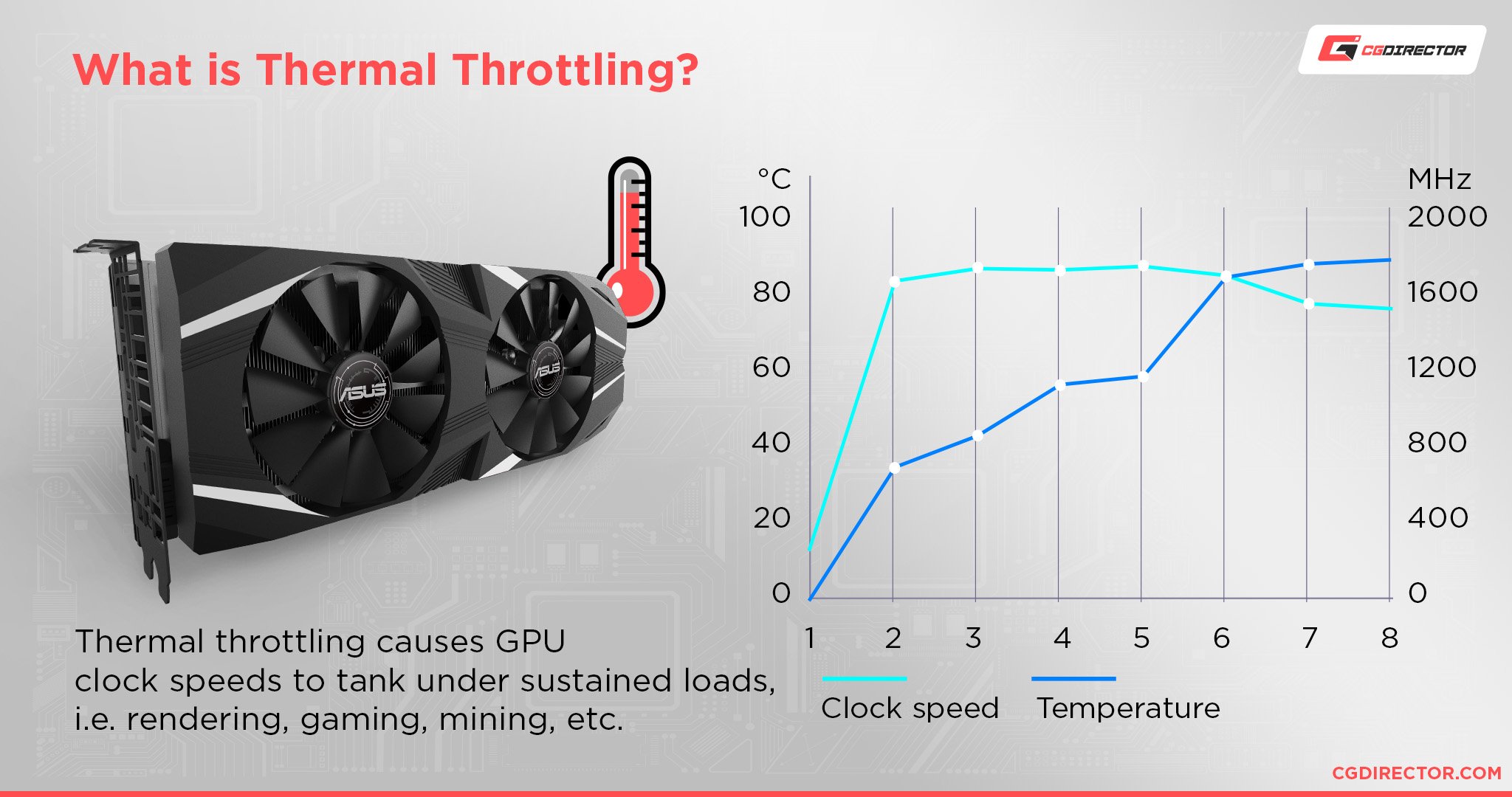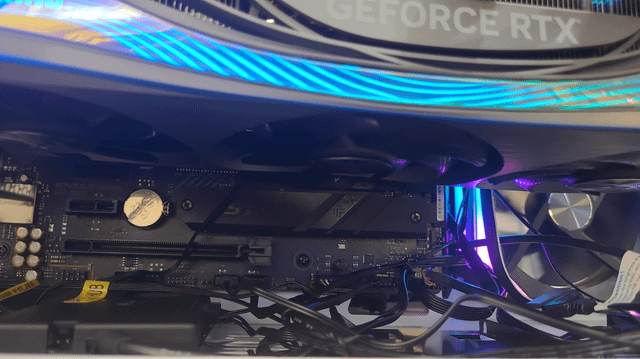Graphics card fans may not spin due to a lack of power or a software-controlled setting. Faulty connections or hardware malfunctions could also cause the issue.
Graphics card fans play a crucial role in keeping your computer cool and functioning efficiently. They kick into action once a certain temperature threshold is reached. At times, these fans might not spin immediately upon system boot-up, leading users to suspect a problem.
It’s key to note that some modern graphics cards feature a passive cooling mode where fans remain idle until needed, reducing noise and wear during light usage. If your fans aren’t spinning under high loads, it’s essential to investigate, as overheating can lead to severe damage to your graphics card and impact overall system performance. Ensuring that your graphic card’s fans are operational is paramount for maintaining an optimal PC experience.
Symptoms Of Inactive Gpu Fans
Understanding the signs of inactive graphics card fans is crucial for maintaining your computer’s health. A silent GPU might sound ideal, but it could point to underlying issues. Bold recognition of fan inactivity can save your system from overheating. It can prevent potential damage to your graphics card.
Recognizing Fan Inactivity
Spotting the problem early is key. Check if the fans are motionless when the computer is under load. Use software to gauge temperature readings. High temperatures with still fans signal a red flag. They should be spinning to cool the components.
Potential Indicators Of A Problem
- Unusual graphics performance: Lags or stutters during gaming or video rendering.
- Overheating: Touch the PC case near the graphics card. If it’s too hot, there might be an issue.
- Startup silence: Listen for fans on boot. No sound could mean they’re not spinning.
- Software warnings: Use hardware monitoring tools. Look for alerts about high temperatures or fan failure.
Identify these signs promptly. Desist from ignoring them. This ensures the longevity of your GPU and system.

Credit: m.youtube.com
Assessing The Issue
Imagine you’re ready to dive into your favorite game, but your graphics card fans aren’t spinning. It’s critical to figure out why this is happening to prevent overheating and potential damage. Here’s how to assess the issue methodically.
Checking Power Connections
First, check if the power cables are connected properly. A loose cable can prevent fans from spinning. Make sure all connectors are securely plugged into the graphics card and power supply.
- Inspect the 6-pin/8-pin power connectors
- Ensure cables are not damaged
- Check if PSU has adequate power
Ensuring Proper Seating
A graphics card not fully seated in the PCIe slot can cause fan issues. Power down your PC and reseat the card. Make sure it clicks into place.
- Turn off and unplug your PC
- Gently remove the graphics card
- Re-insert the card into the PCIe slot
- Secure the card with screws if necessary
Bios Settings Verification
BIOS settings can affect fan performance. Enter BIOS on startup. Look for fan control options. Check if settings are disabling the fans or setting a high temperature threshold before they kick in.
| Step | Action |
|---|---|
| 1 | Restart your computer |
| 2 | Press BIOS key (often F2 or DEL) |
| 3 | Navigate to fan settings |
| 4 | Adjust accordingly |
Common Causes Of Stalled Fans
Are your graphics card fans refusing to spin? This sign often worries PC users. Your graphics card stays cool with fans. These fans halting pose a risk to your computer’s performance and lifespan.
Dust And Debris Buildup
Dust could be the culprit stopping your fans. Over time, dust and debris gather inside your computer. They clog the fans within your graphics card. This buildup can prevent fans from spinning freely. A simple and effective fix is cleaning. Regularly cleaning the fans can prevent this issue.
Software Controls And Fan Curves
The fan’s spinning depends on its software settings. Software like MSI Afterburner or your graphics card’s utility can manage these settings. They use fan curves to decide fan speed at different temperatures. Sometimes, the curve is set to keep fans still under a certain temperature. Check these settings to make sure your fans run correctly.
Aging Or Worn-out Bearings
Fans not spinning could also be due to old bearings. Bearings reduce friction as fans spin. They can wear out or get damaged over time. This leads to fans getting stuck or spinning slowly. If your fans are old, replacing them might be the only solution.
Diy Troubleshooting Steps
Do you wonder why your graphics card fans won’t spin? Take a deep breath, roll up your sleeves, and get ready for some DIY action. Here are a few steps to help you find and fix the issue.
Cleaning Techniques
Dirt could be the culprit. Turn off your PC and unplug it. Use a can of compressed air to gently blow away dust. A soft-bristled brush can also dislodge stubborn particles. Make sure everything is dry and clear before testing again.
Manual Fan Spin Test
Let’s give your fans a nudge. Power off and open up your PC. Gently spin the fans with your finger. They should move smoothly. If they don’t, the fan bearings might be stuck or damaged.
Updating Drivers And Firmware
Outdated software can cause hiccups. Visit the graphics card manufacturer’s website. Download and install the latest drivers and firmware. This simple step can often kickstart those idle fans into action.
| Step | Action | Tool |
|---|---|---|
| 1 | Clean your GPU | Compressed air, brush |
| 2 | Manual fan test | Your finger |
| 3 | Update software | Internet, PC |
When To Seek Professional Help
Graphics card fans not spinning can signal a technical problem. Sometimes, DIY fixes can do more harm. Knowing when to call in experts is key. Let’s explore signs indicating the need for a professional technician.
Understanding The Limits Of Home Repair
It’s essential to recognize when a problem is beyond a simple fix. Complex issues and the risk of damaging components often warrant professional assessment. Here are signs that DIY efforts should stop:
- No response after basic troubleshooting: If checking connections and cleaning dust doesn’t help, stop there.
- Visible damage on the card: Burn marks or swollen capacitors are bad signs.
- PC fails to boot: If the system won’t start, the issue could be serious.
Finding Qualified Technicians
Selecting a skilled technician is crucial for a reliable fix. Search for certified professionals with experience in graphics card repairs. Check reviews and ratings to gauge their reputation. Here’s a straightforward approach:
- Seek recommendations: Friends or online forums can suggest trustworthy technicians.
- Verify credentials: Ensure the technician has the proper certifications and experience.
- Consider service warranties: A warranty on repairs adds confidence in their service.

Credit: www.cgdirector.com
Preventative Measures For The Future
Are you facing issues with your graphics card fans not spinning? Preventing such problems can save you from future stress and potential system failures. Taking proactive steps can ensure your GPU remains cool and functional for gaming sessions and intensive tasks. Implementing preventive measures is key to maintaining a healthy system. Let’s explore these measures and safeguard your GPU’s performance.
Regular Maintenance Schedule
Maintaining a regular schedule for cleaning and checking your graphics card is crucial. Dirt and dust accumulation can hinder fan movement and reduce cooling efficiency. By adhering to a maintenance routine, you can spot issues before they become serious problems. Follow these steps:
- Bi-monthly cleaning to remove dust.
- Visual inspection of fan blades for damage.
- Checking screw tightness and fan connection.
Upgrading Cooling Systems
Sometimes stock cooling isn’t enough, especially if you’re pushing your GPU with high-end games or software. Upgrading to a better cooling system can be a game-changer:
- Install aftermarket coolers for improved performance.
- Consider liquid cooling systems for advanced thermal management.
- Ensure adequate case airflow around the graphics card.
Monitoring Software For Early Detection
Stay ahead of potential issues with monitoring software. Early detection of temperature spikes or fan failures can save your GPU from overheating. Use applications to continuously check your system’s health:
- GPU-Z or MSI Afterburner for real-time monitoring.
- Set up automatic alerts for temperature thresholds.
- Check for software updates regularly to ensure accuracy.

Credit: www.reddit.com
Frequently Asked Questions On Why Are My Graphics Card Fans Not Spinning
How Do I Fix My Graphics Card Fan Not Spinning?
Check the power connections to ensure they’re secure. Clean the fan blades to remove dust buildup. Try manually spinning the fan to detect any obstruction. Update your graphics card drivers. If these steps fail, consider replacing the fan or contacting technical support.
Is The Graphics Card Fan Supposed To Spin?
Yes, the graphics card fan should spin to help cool the card during operation. It may stop spinning under low load to conserve energy and reduce noise.
How Do I Turn On My Graphics Card Fan?
To activate your graphics card fan, access the control panel provided by your GPU manufacturer, like NVIDIA Control Panel or AMD Radeon Settings. Navigate to the fan control section and adjust settings or toggle the fan to “On. ” Save changes and exit.
Why Is My Gpu Not Turning On?
Your GPU might not turn on due to a few reasons: improper installation, power supply issues, faulty hardware, or outdated drivers. Ensure the card is seated correctly, check power cables, update drivers, and inspect for damage.
Conclusion
Confronting a silent graphics card can be unsettling. Remember, the issue often stems from simple causes like power-saving modes or connectivity hiccups. Regular maintenance and driver updates can prevent many problems before they start. Don’t hesitate to seek professional help if DIY fixes fail; it’s crucial for keeping your PC in top gaming shape.
Keep those fans, and your gaming rig, running smoothly!





